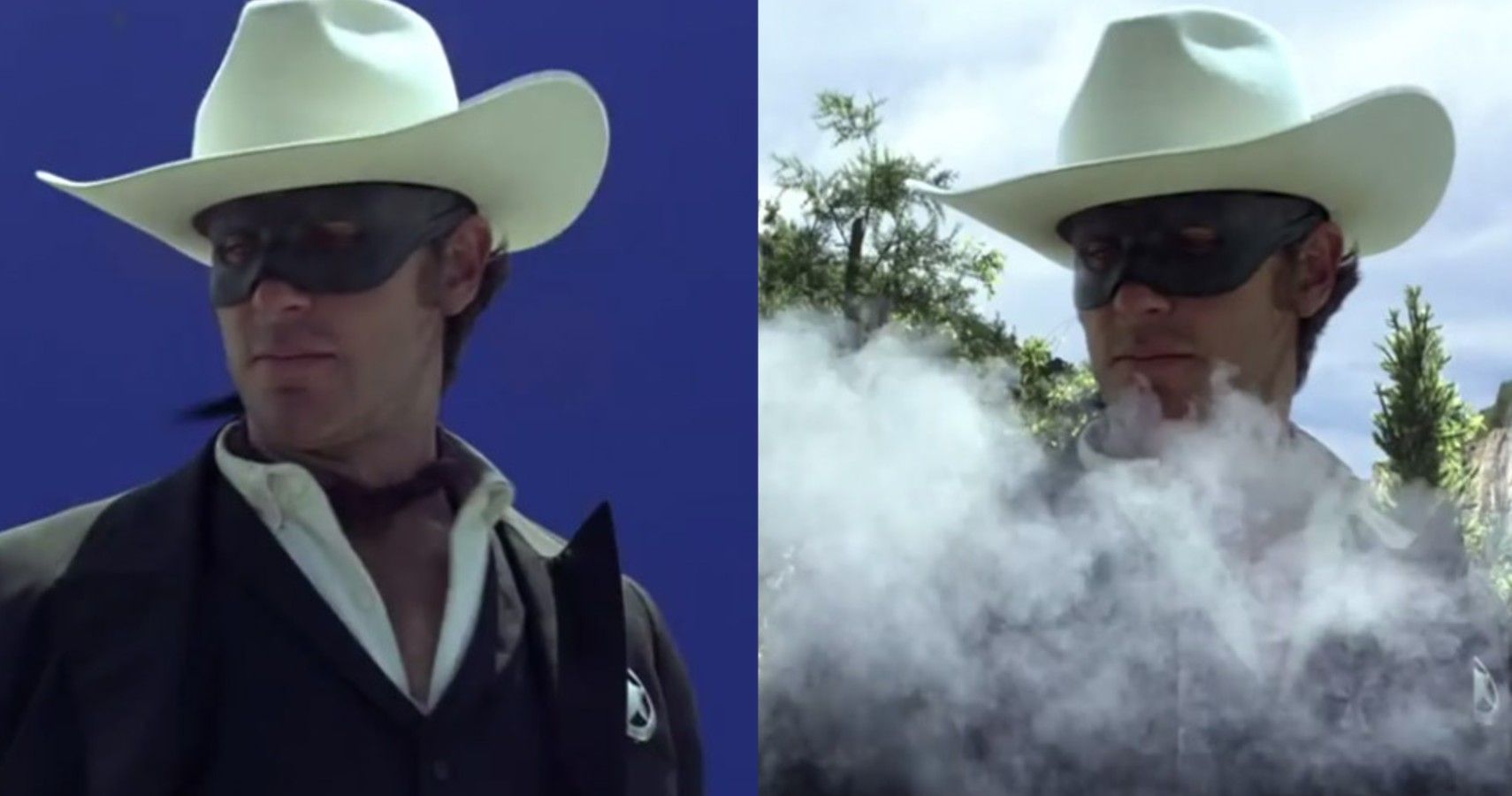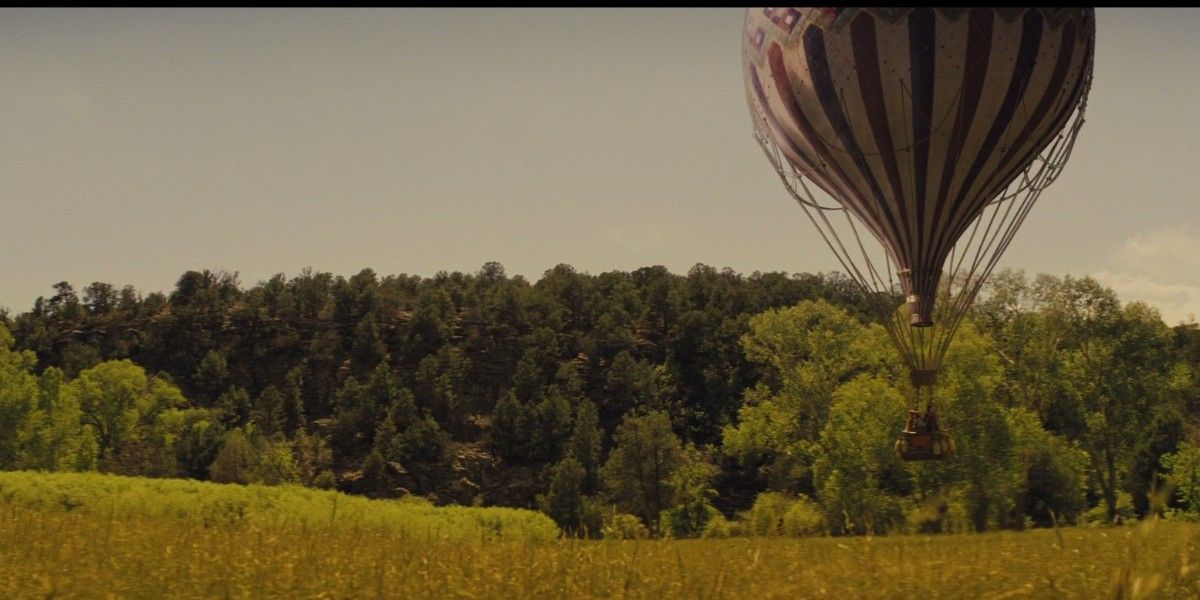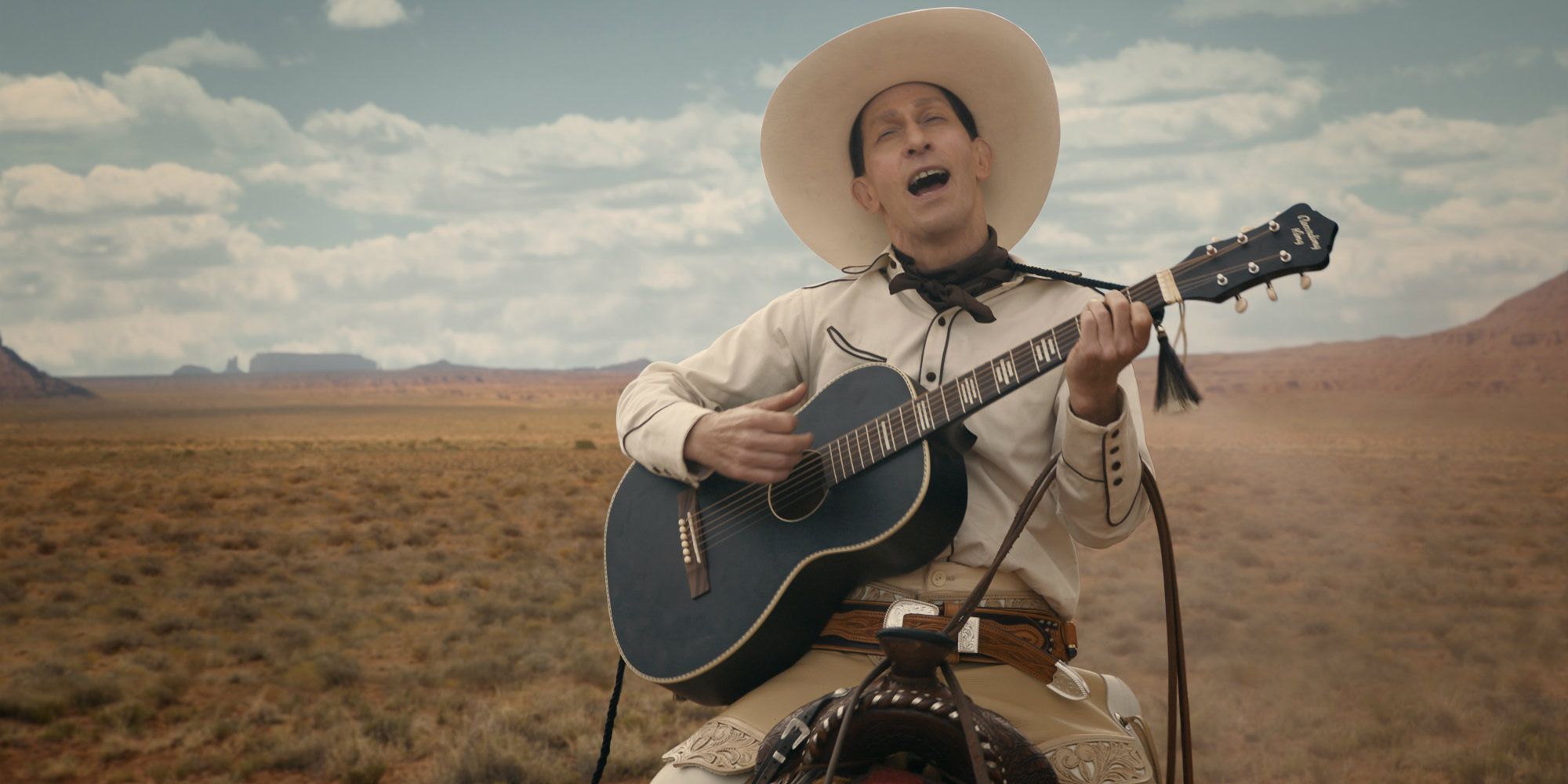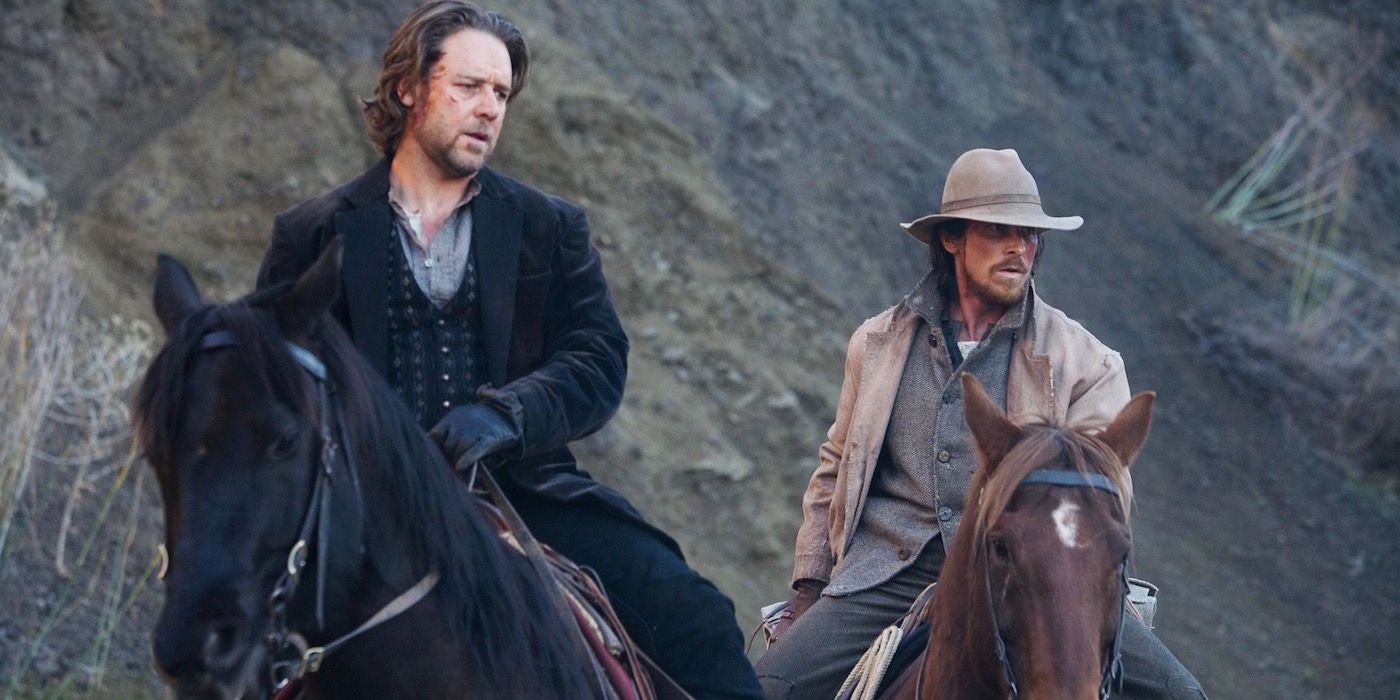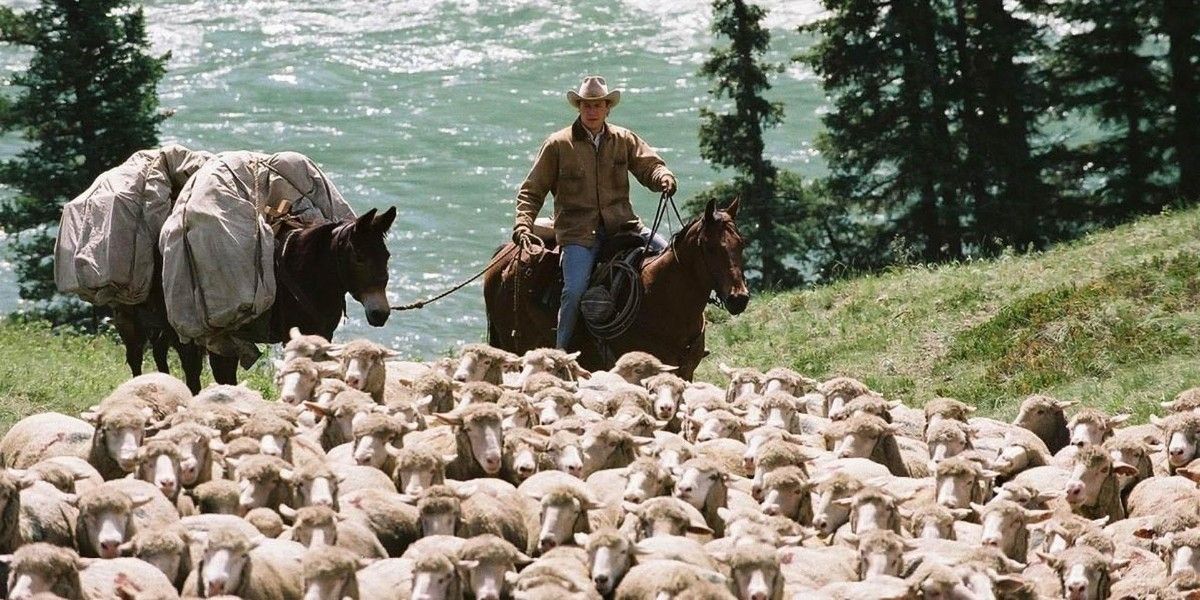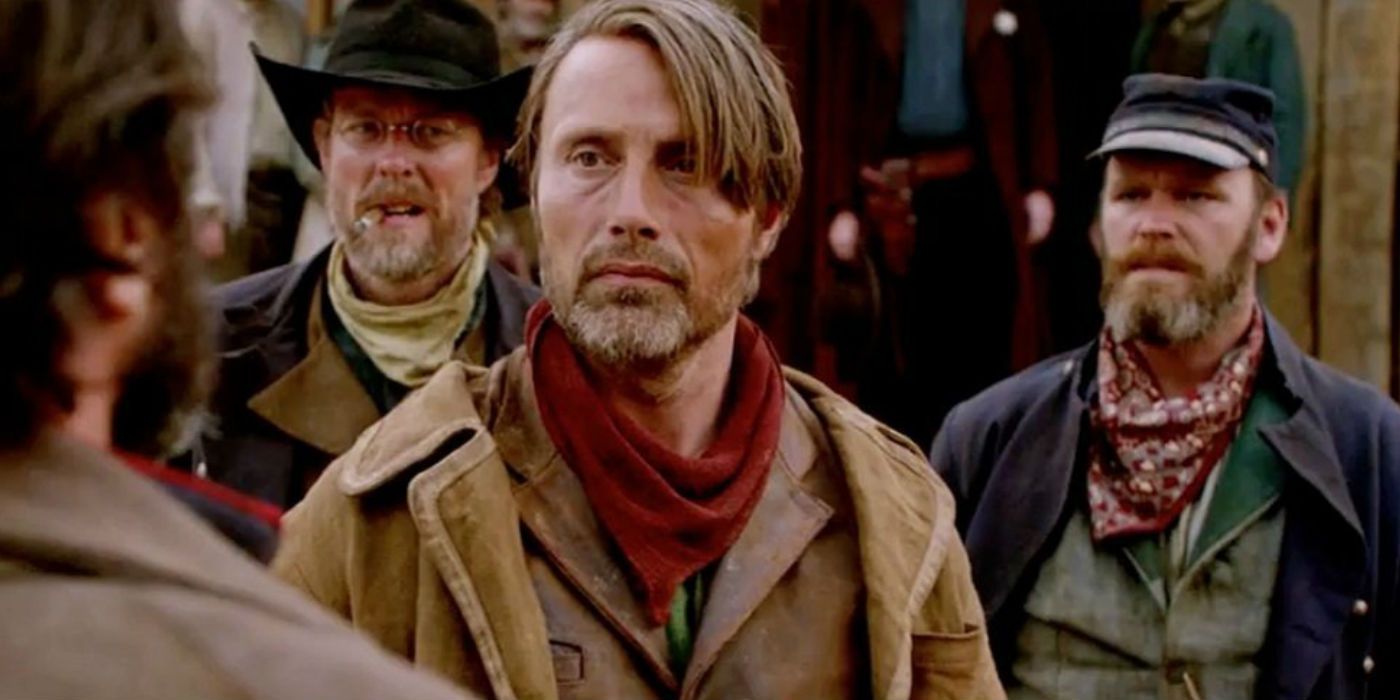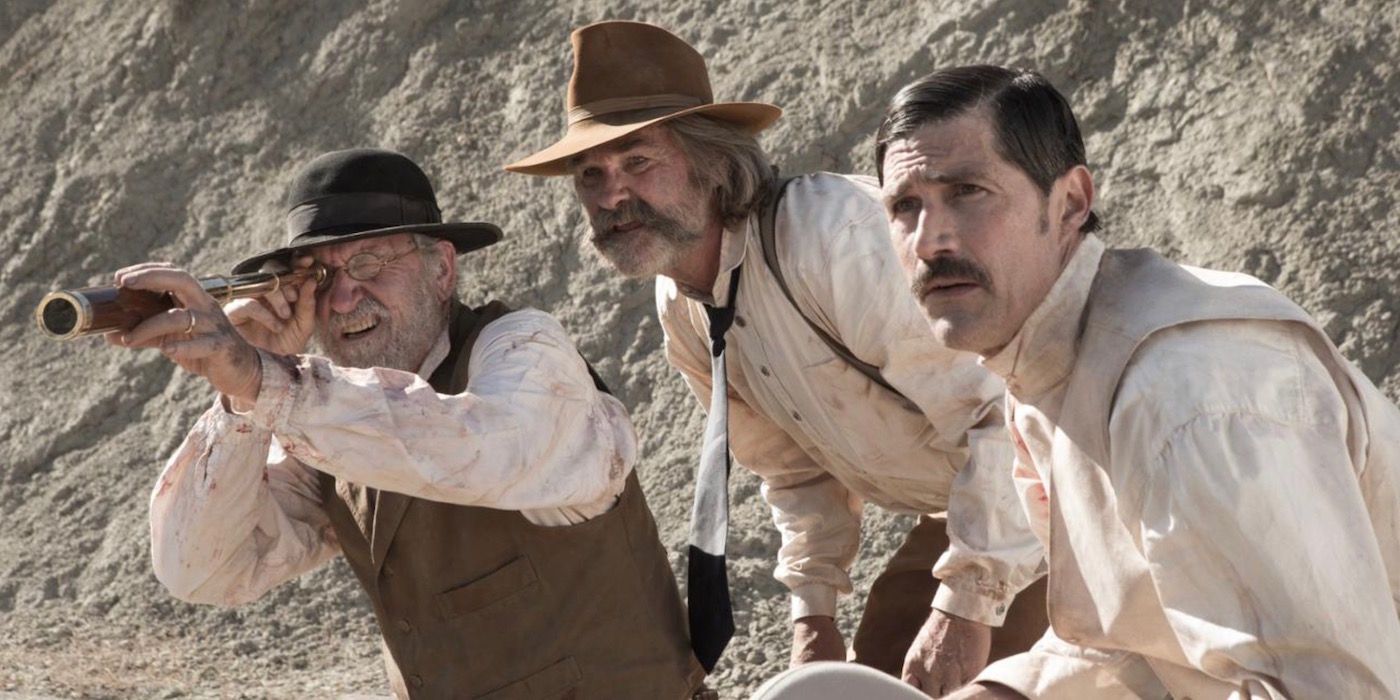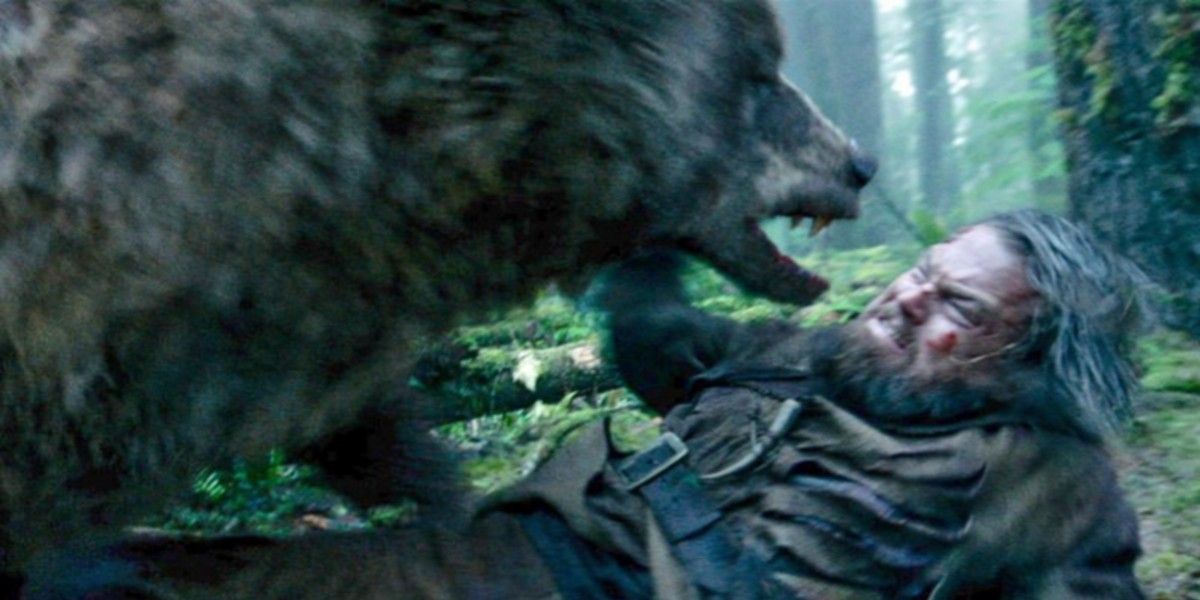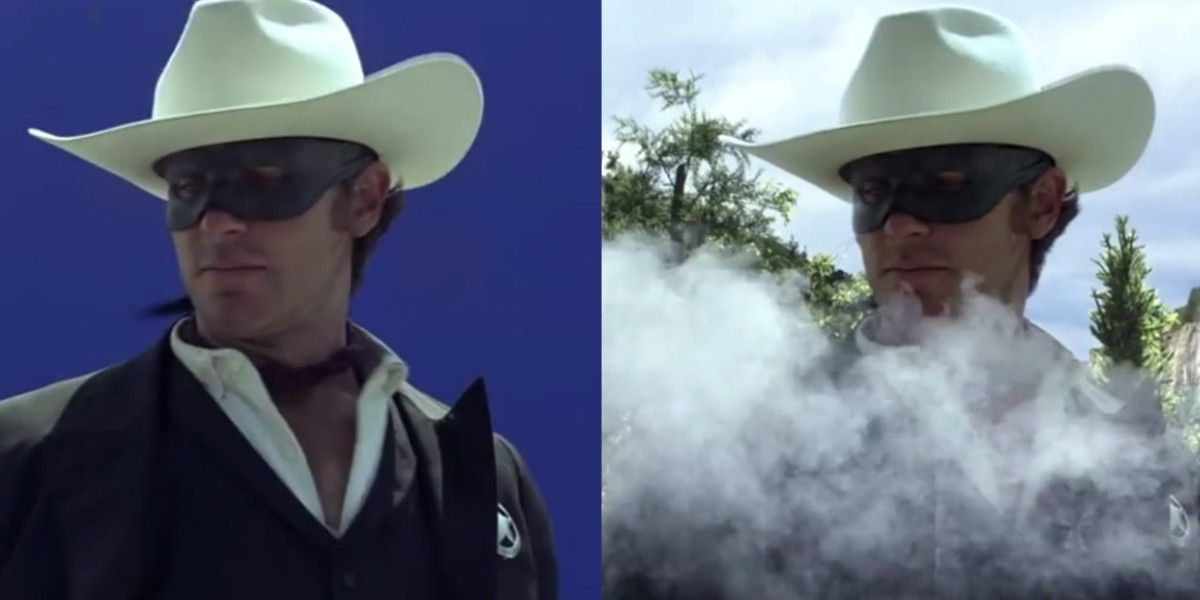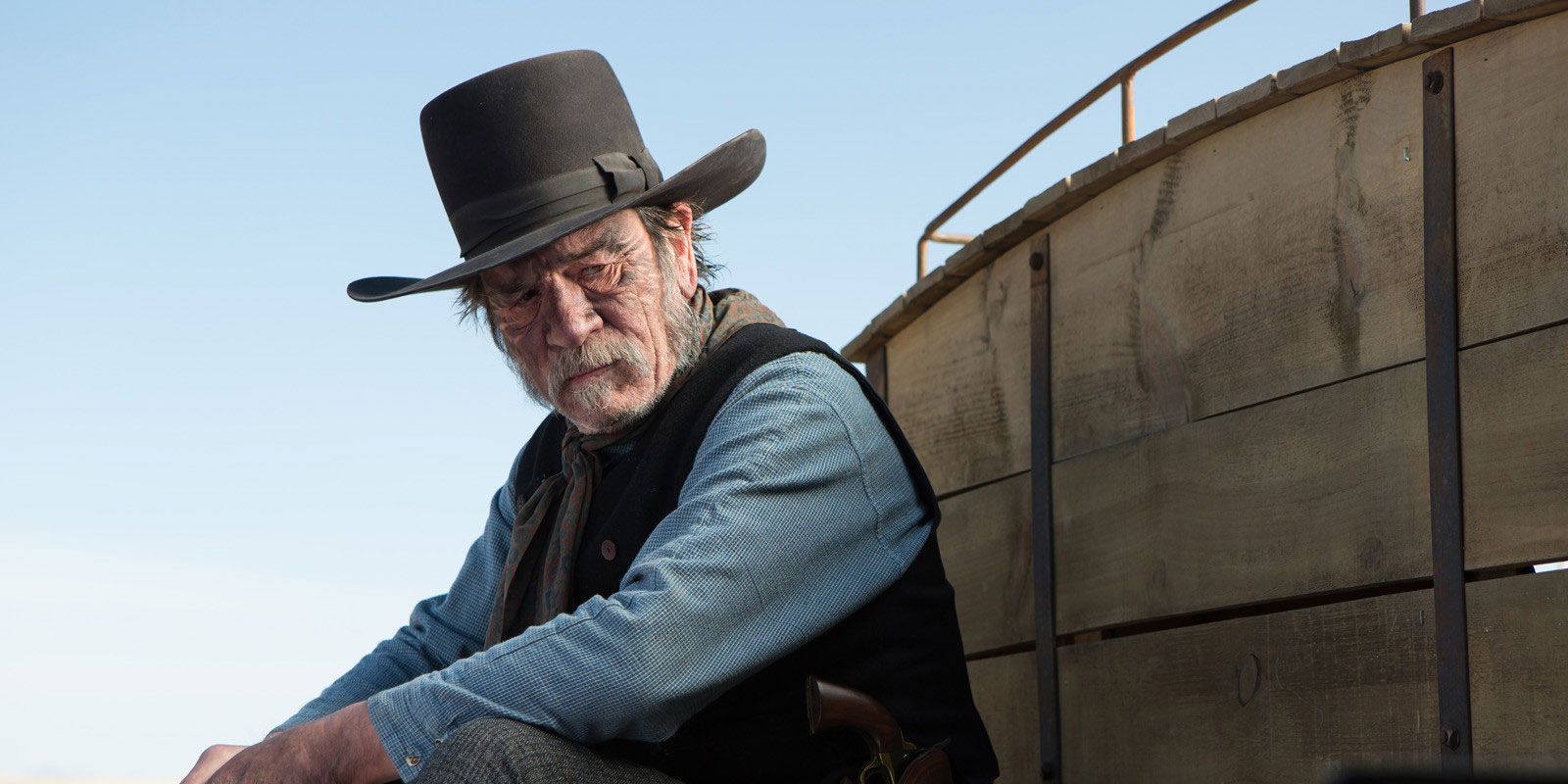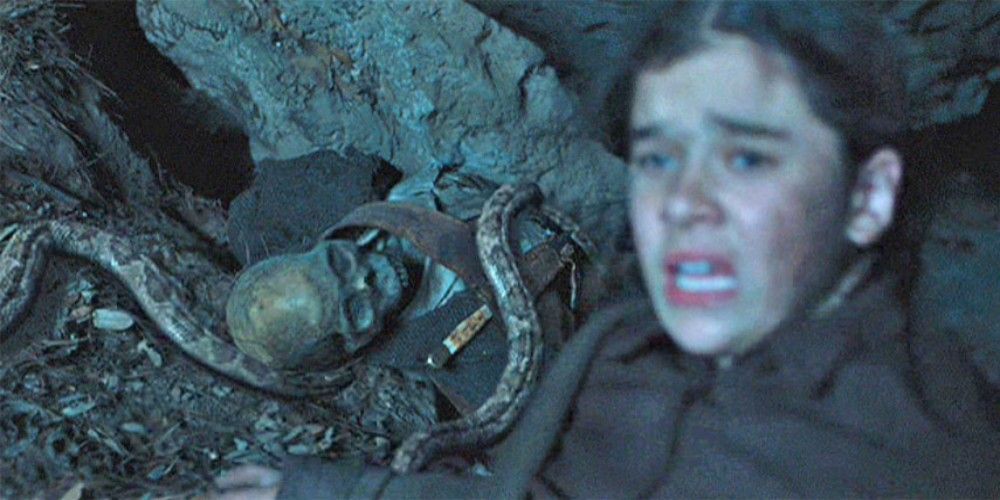At one point in the history of American cinema, Westerns reigned supreme. They were as plentiful and eagerly anticipated as the superhero films of today. Unlike superhero films however, they didn't have copious amounts of CGI to move their storylines forward. Even now, the occasional Western that gets released has very limited CGI precisely because audiences watch Westerns for their "authentic" portrayal of frontier life.
That being said, CGI allows for Westerns to reconsider the aspects of the genre that may be unsafe for performers and animals, such as stunts done on horseback. It also allows for the ubiquitous herds of livestock to be digitally added in rather than hopelessly wrangled for every scene. It can even change a location in another country to resemble the Old West, thus limiting the cost of travel. Below you'll find 10 things in Westerns you didn't know were CGI.
THE HOT AIR BALLOON IN JANE GOT A GUN
Boasting a quality cast, gorgeous cinematography, and a gritty storyline, Jane Got a Gun was a sleeper hit in 2016 that didn't get the recognition it deserved. Featuring Star Wars alums Natalie Portman, Joel Edgerton, and Ewan McGregor, it focuses on one woman's unlikely team up with her ex-lover to stop a crew of dangerous men from killing her husband.
In an example of unexpected CGI, in order to add movement to some of the still scenes amidst the Old West's wide-open expanses, birds were added flying overhead and in background shots. But the most prominent use of CGI was the scene in the hot air balloon.
ALL OF THE ENVIRONMENTS IN THE BALLAD OF BUSTER SCRUGGS
For the Coen Brothers dynamically quirky Western anthology The Ballad of Buster Scruggs, available exclusively on Netflix, nearly every single scene had CGI additions to enhance it. The Old West they sought to create was something of a hyper-stylized one, as though something from out of Grimms Fairytales.
From adding additional coloring and contrast to beautiful sunset vistas, turning an ordinary room into a saloon and brothel, and arrow wounds to outlaws' necks, to making a man look as though he was born without arms and legs, CGI was used to bring their morbid fables to life.
THE TORCHES AND EXPLOSIONS IN 3:10 TO YUMA
A credible remake to the 1957 classic, 3:10 to Yuma follows the unnerving journey one impoverished rancher must take in order to deliver an outlaw for his day in court, facing thieving posses and the wily nature of his captive along the way.
Western movies are known for their complex horse work, and this film is no exception. The safety of the animals is foremost in the film crew's minds, and so whenever there's a threat to the animal's safety CGI is utilized. For the gunfight where both a horse and rider die in the explosion, the explosion was CGI, as were any torches carried by riders on horseback.
THE HERDS IN BROKEBACK MOUNTAIN
A controversial modern Western when it came out, audiences were divided on the subject matter depicted in Brokeback Mountain, a story of love and loss between two cowboys in a society that deemed their lifestyles immoral.
Whether you agree with the film's premise or not, it features some pretty phenomenal performances by Jake Gyllenhaal, Heather Ledger, and Anne Hathaway, as well as some stunning vistas in the Oregon wilderness. In order to capture the scope of the herds they were tending, CGI was used to multiply the sheep rather than wrangle real ones.
THE OLD WEST IN THE SALVATION
Once upon a time, "Spaghetti Westerns" dominated American cinemas. It was less expensive to film in Italian locations, so dusty patches of land outside Tuscany became the deserts of Nevada as needed. In recent years, there's been a rise in the "Kraut Western", so named for the Danish filmmakers that do the same thing.
Just like with the Spaghetti Westerns, they don't do that by filming in American locations. In The Salvation, a story about one Danish immigrant's revenge against a gang of outlaws that murdered his wife, the South African locations were altered with CGI to turn them into American settings.
THE CAVE ENTRANCE IN BONE TOMAHAWK
2015 saw something of a Western revival, with The H8tful Eight, Slow West, and Bone Tomahawk providing very different aspects of the genre. With a deft blend of horror, action, and laconic ambiance, it saw a posse led by Kurt Russell's Sheriff Hunt go in search of a young woman stolen from the town by a local tribe that may be more than what they seem.
Lots of practical effects were used in the making of the film, which adds to its visceral sense of savagery (one scene in particular will leave you haunted well after the film ends). That's why it was particularly noticeable when CGI was used to mark the entrance to the tribe's cave.
The Bear in THE REVENANT
The Revenant is largely remembered for two great achievements; Leonardo DiCaprio finally getting his Academy Award for Best Actor, and one of the most convincingly life-like depictions of an animal onscreen being rendered using CGI. It occurs when DiCaprio's character is getting mauled by a grizzly in the woods.
This pivotal sequence had to be captured as perfectly, because it was lengthy and detailed enough that Industrial Light and Magic had to make audiences believe that grizzly had all of its weight and aggression focused on its prey in close-ups and wide takes. 6'4" stuntman Glenn Ennis was in a blue bear suit as well, but the CGI was placed over it later.
ALMOST EVERY NATURAL ENVIRONMENT IN THE LONE RANGER
It should come as no surprise to anyone that The Lone Ranger, the abysmally received adventure about the famous masked Western hero, was bursting at the seams with CGI. From the adrenaline-pumping brawls on locomotives to the barrage of explosions around every corner, it was a non-stop digital deluge.
What audiences may not know is most of the film's natural environments weren't even real. The Lone Ranger himself, Armie Hammer, stood in front of blue screens, with the mountains, valleys, trees, and sky placed behind him in post production.
THE PRAIRIES IN THE HOMESMAN
Tommy Lee Jones, veteran actor in the several modern Westerns he's been in since the Lonesome Dove television series, gives his usual gruff and taciturn gravitas to The Homesman, a Western that chooses to look at the life of battered women on the frontier.
While the cinematography is beautiful, there are moments when it isn't allowed to shine for its own sake, when the majestic natural environments its capturing have to be enhanced to seem impressive. The CGI used to create the endless-seeming prairies seems unnecessary when the real ones are awe-inspiring enough.
THE SNAKES IN TRUE GRIT
A remake of the late '60s classic that was one of John Wayne's last films, True Grit with Jeff Bridges in the saddle as Rooster Cogburn is a rousing adventure tale of revenge, flawed heroism, and an unlikely friendship between an old gun and a young girl determined to get justice.
Early in the film, the young girl falls down a mine and encounters a dead body infested with rattlesnakes. While some real snakes were used in the scene, they were intermixed with CGI snakes, some of which were too dangerous to allow actors near.

